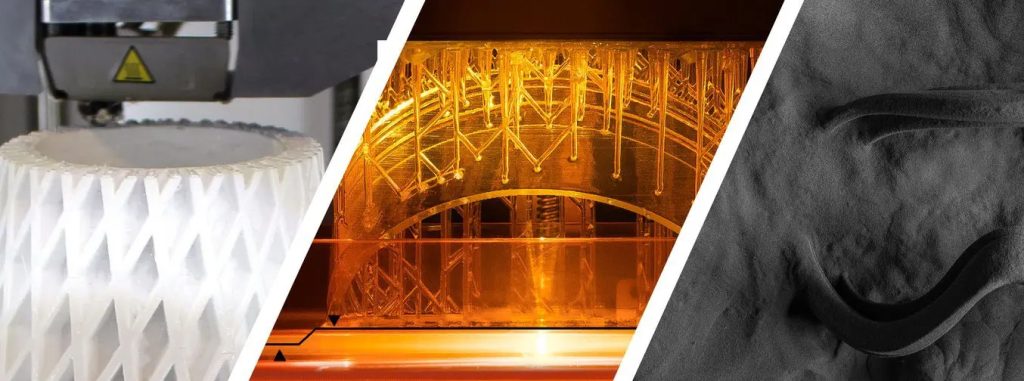
3D printing, also known as additive manufacturing, has transformed modern prototyping and production. Among the most widely used technologies are SLA (Stereolithography), SLS (Selective Laser Sintering), and FDM (Fused Deposition Modeling). Each has unique processes, materials, and advantages that make them suitable for different applications.
Companies like Boona Prototypes specialize in these technologies, offering comprehensive services for industries ranging from automotive and aerospace to consumer products. Choosing the right 3D printing method depends on your design requirements, cost targets, and final application.
I. Understanding the Technologies
FDM (Fused Deposition Modeling)
-
Process: Extrudes melted thermoplastic filament layer by layer.
-
Materials: PLA, ABS, PETG, TPU, Nylon.
-
Best for: Cost-effective functional prototypes, jigs, and fixtures.
SLA (Stereolithography)
-
Process: Uses a UV laser to cure liquid resin layer by layer.
-
Materials: Standard resins, high-temperature resins, flexible resins.
-
Best for: High-detail models, dental/medical parts, smooth surface finishes.
SLS (Selective Laser Sintering)
-
Process: A laser sinters powdered thermoplastic into a solid structure.
-
Materials: Nylon (PA11, PA12), composites with glass or carbon fiber.
-
Best for: Durable prototypes, snap-fit assemblies, and small-batch production.
II. Comparison of Print Quality & Surface Finish
| Criteria | FDM | SLA | SLS |
|---|---|---|---|
| Layer Resolution | 100–300 microns | 25–100 microns | 60–120 microns |
| Surface Finish | Rough, visible lines | Extremely smooth, fine detail | Slightly grainy but uniform |
| Accuracy | ±0.5 mm | ±0.1 mm | ±0.3 mm |
| Supports Needed | Yes | Yes | No (powder acts as support) |
III. Mechanical Properties & Applications
| Property | FDM | SLA | SLS |
|---|---|---|---|
| Strength | Moderate to high (material-dependent) | Lower structural strength, brittle | High strength and durability |
| Flexibility | Good with TPU/nylon | Limited | Excellent with PA11/TPU powders |
| Durability | Good for prototypes & end-use | Limited | Excellent, suitable for production |
| Applications | Functional prototypes, tooling | Dental models, molds, art pieces | Snap-fits, housings, end-use parts |
IV. Cost and Accessibility
-
FDM: The most affordable, with materials costing as little as $20–50 per kilogram.
-
SLA: Mid-range; resins are more expensive ($80–200 per liter), but high resolution makes it worthwhile.
-
SLS: The most expensive; requires industrial-grade printers and powders, making it ideal for professional prototyping and production runs.
V. Choosing the Right Technology
-
Choose FDM if you need low-cost, functional prototypes quickly.
-
Select SLA if your project demands extreme precision and smooth surface finishes.
-
Opt for SLS if you need durable, complex, and production-ready parts.
At Boona Prototypes, you can access all three technologies under one roof, ensuring you always have the right solution for your design and production needs.
Conclusion
SLA, SLS, and FDM each play a crucial role in the world of 3D printing. The right choice depends on your balance of cost, detail, strength, and complexity. Whether you are developing high-detail display models, functional prototypes, or durable end-use components, these three technologies cover the spectrum of requirements.
For businesses and designers seeking a trusted 3D printing partner, Boona Prototypes offers professional SLA, SLS, and FDM services to help accelerate innovation, reduce costs, and bring ideas to life.
FAQs
1. What is the main difference between SLA, SLS, and FDM?
The main difference lies in their printing processes. FDM extrudes melted plastic filament, SLA cures liquid resin with a UV laser, and SLS sinters powdered thermoplastic with a laser. Each method has unique advantages in terms of cost, surface finish, and mechanical strength.
2. Which 3D printing technology is best for high detail?
SLA (Stereolithography) is best for high detail and smooth surface finishes. It can achieve layer resolutions as fine as 25 microns, making it ideal for dental models, jewelry, and design prototypes.
3. Which 3D printing method produces the strongest parts?
SLS (Selective Laser Sintering) produces the strongest and most durable parts, suitable for functional prototypes and low-volume production. FDM can also create strong parts depending on the material, but SLA parts tend to be more brittle.
4. Is FDM 3D printing cheaper than SLA and SLS?
Yes, FDM is the most cost-effective option, both in machine price and material cost. It is widely used for quick prototyping and functional testing. SLA resins are more expensive, while SLS requires industrial-grade equipment, making it the costliest option.
5. Do SLA and SLS require support structures like FDM?
-
FDM: Requires supports for overhangs.
-
SLA: Requires supports made from resin, which must be carefully removed.
-
SLS: Does not require supports, as the unsintered powder acts as a natural support structure.
6. Which 3D printing technology should I choose for my project?
-
Choose FDM for affordable, functional prototypes.
-
Choose SLA for smooth, detailed visual models.
-
Choose SLS for durable, complex, and end-use parts.
For guidance, you can work with professional service providers like Boona Prototypes, who offer all three technologies.
7. Can SLA, SLS, and FDM be used for end-use production?
Yes. While they are often used for prototyping, both SLS and FDM are increasingly used for low-volume end-use production. SLA is mostly preferred for molds, medical models, and aesthetic parts rather than heavy-duty applications.



